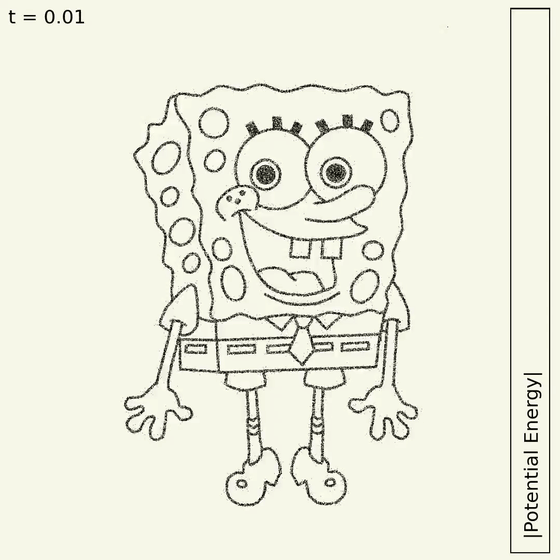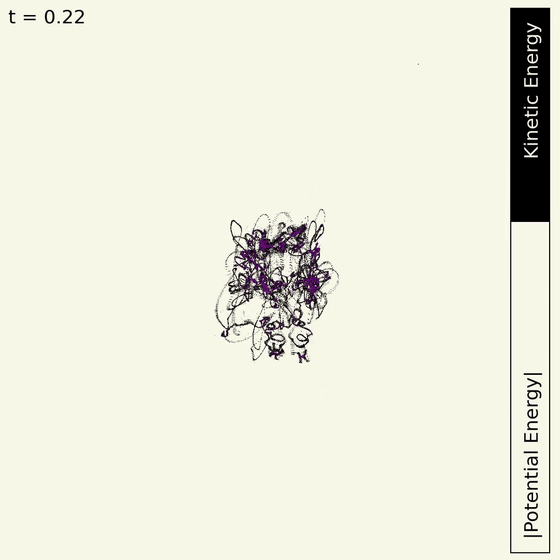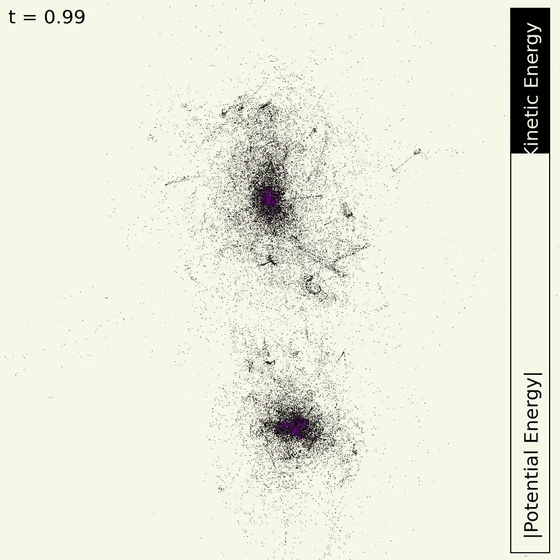SpongeBob's N-body problem finally reaches virial equilibrium

By
Peter Rocero, an astrophysics student at the University of La Laguna, has released an animation of a simulation of the ' N-body problem ,' a theory that says that the more celestial bodies there are, the more difficult it becomes to analyze the orbits and movements of stars. The animation shows SpongeBob Squarepants, a popular character from the animation series SpongeBob Squarepants, running the simulation.
Gravitational collapse of SpongeBob
— Pere Rosselló (@PeRossello) March 16, 2024
You can see how Virial equilibrium is eventually reached pic.twitter.com/Sm9p8cB3os
The law of universal gravitation, which states that all objects have a mutual gravitational force, is a physical law discovered by British scientist Isaac Newton in the 17th century. By applying this law of universal gravitation, we can calculate the forces acting between celestial bodies and calculate their movements and orbits.
However, when the number of celestial bodies is three or more, this calculation becomes extremely difficult. Since it is impossible to analytically solve the equations of motion for N particles with gravity, this problem is called the 'N-body problem' in the world of astrophysics.
Rossello released an animation of 100,000 particles simulated over 5 hours and 2,000 steps. The initial positions of the N particles are in the shape of SpongeBob Squarepants.

If we simulate the motion of all particles assuming gravity, the particles move toward one point and show

The particles then move in a way that makes them seem to spread out and converge at two points. In terms of energy equilibrium, kinetic energy is now converted into gravitational potential energy.

Eventually, the 100,000 particles that were SpongeBob once again concentrated at one point, eventually settling into a galaxy-like shape. The graph showing the energy balance bounces up and down, but then stops moving, indicating an equilibrium state. Rossello reports that 'N particles have reached

According to Rossello, the simulation is coded in Python, parallelized with numba , and plotted with Matplotlib , and the code will be hosted in his GitHub repository .
N-body simulation made with Python, parallelized with numba, and animated with matplotlib.
— Pere Rosselló (@PeRossello) March 16, 2024
N=100,000. Computation time around 5h for 2,000 steps. Around 1s of compute time per step. Collisions are handled with a softening length.
Code will be on my github, eventually pic.twitter.com/aIMJhr9yqi
Related Posts:







